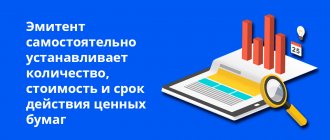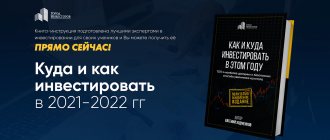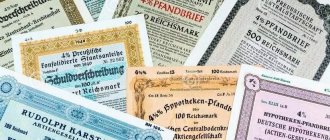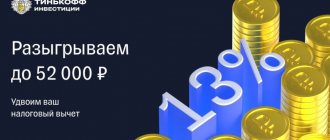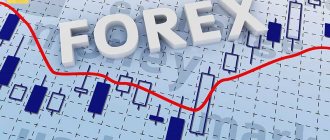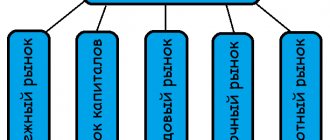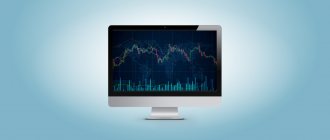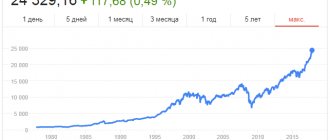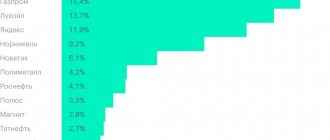Greetings!
The Russian stock market over its entire short history (compared to its counterparts in developed capitalist countries) has come a very interesting path - starting from numerous exchanges that traded vouchers and oil in barter transactions, the default of 1998 and the crisis of 2009 to a modern high-tech trading platform.
Thanks to the Russian stock market, many individuals - investors, traders - and investment corporations and funds have received good profits, billions of dollars in investment capital raised as part of an initial public offering - IPO.
What principles do the Russian stock market currently operate on, what securities are traded on it, who are the participants in trading on it, and how you can make money, I will tell you in this article.
What is considered to be the Russian stock market
In its classical definition, the stock market is an organized and state-regulated system of trading and exchange of securities, goods, currencies, and precious metals.
The operation of the stock market is built on the following principles: Hurry up to take advantage of the doubling of the tax deduction until December 31, 2022.
- Equal access for all participants to the trading systems of the stock exchange and other platforms where the circulation of securities and other exchange assets is provided.
- There is no monopoly on information regarding the value of assets, their characteristics, as well as who is the issuer of securities and the legal owner of the assets.
- Free pricing, absence of price dictate from both the state and large corporations, investment funds (market makers).
In addition, an important element of the operation of any stock market is the presence of a certain system of legislation regulating the operation of the market, establishing rules of the game that are understandable to all market participants - between exchanges, brokers, investors and the state.
Apart from these structural or institutional elements, the stock market cannot do without an appropriate infrastructure.
This system includes elements such as:
- information transmission systems, special software;
- exchange trading platforms and trading platforms;
- payment systems through which settlements are made between all counterparties and stock market participants. These can be traditional banking applications and transfer systems, as well as specialized ones, including those built on the blockchain platform;
- data storage and accounting systems;
- market media resources, consulting and auditing companies.
Functions and tasks
Organizing the turnover of the secondary securities market is the main task of the stock exchange. To attract investment capital for its development goals, a joint-stock company conducts an IPO (Initial Public Offering) - an initial public offering of shares to a circle of investors.
First of all, applications from large investors are accepted, then the issuer's securities begin to be traded on the stock exchange. The price is determined by supply and demand. The exchange plays the role of a trading platform on which transactions for the purchase and sale of issuers are concluded.
The goal of the exchange is to provide everyone with maximum access to trading shares placed on the stock exchange.
An important function of the stock exchange is to ensure liquidity of traded instruments. This can be done naturally - market supply/demand. Additionally, the work of market makers at the stage of initial placement and further during the trading process.
Today, stock exchanges use automated trading. Everything happens with the help of computers. Hundreds of transactions per unit of time. This places increased demands on the computing power of the stock exchange platform and communication channels with it.
The final trader who has been trading on the stock exchange for 5–10 years may never see it in person. Everything happens remotely through a broker. An investor can sit in Australia or Indonesia and trade on the NYSE in New York.
The tasks of the stock exchange include maintaining records of securities - depository activities. It can be provided by the exchange or licensed outside market participants.
Structure and participants
The stock market implies the presence of a certain structure, which is primarily formed by such institutions as:
- The Central Bank of the Russian Federation, which determines the policy of the stock market (as part of the overall state financial system), the circulation of securities on it, the rights and obligations of all its participants. In some cases, the Central Bank of the Russian Federation is a direct participant in trading on the exchange. For example, he often carries out currency interventions to smooth the exchange rate of the national currency - the ruble - or, on the contrary, enters the stock market with purchases of dollars to replenish the country's gold and foreign exchange reserves.
- Stock exchange as a venue for trading securities and other exchange-traded assets.
- Intermediaries in the form of brokerage companies, currency dealing centers, forex brokers, investment banks, as well as management companies of mutual funds and ETFs.
- Bidding participants are investors (both private and corporate), including non-state pension funds, banks, and insurance companies.
- Tax authorities that keep records of financial transactions in trading on the stock market, over-the-counter transactions with securities and assets, accrue and collect taxes.
Risks in financial markets
When engaging in financial activities, there are always certain financial risks. Likewise, the stock exchange has its own risks, which all exchange participants should be aware of.
Risks on the stock exchange:
- Not trading risks.
- Trading risks.
Non-trading risks include risks that arise in the event of bankruptcy of a brokerage company and errors in the details of financial transactions for replenishment/withdrawal of funds.
Trading risks arise when conducting trading operations on the stock exchange. These include: failures in quotes, violation of the rules of the trading algorithm, violation of equity management, aggressive trading methods, as well as the liquidation of their enterprises by issuers.
List of exchanges
Unfortunately, the list of trading platforms that fall under the definition of “stock exchange” in Russia is small.
There are two full-fledged exchange platforms:
- Moscow Interbank Currency Exchange RTS - MICEX (in English transcription - MOEX - RTS). The exchange has the status of a legal entity - it is PJSC Mosbirzha. This platform now represents a merger of two previously independent exchanges. The merger took place in 2015.
- The second stock exchange in Russia is the St. Petersburg Stock Exchange. It plays a supporting role and mainly trades in foreign securities.
Legality of stock exchanges
All stock exchanges operate legally (legally).
What the stock exchange does is of great national importance and ensures the infusion of financial flows into the development of the economy.
Important! All stages of transactions, their legality, are checked by regulators and supervisory authorities. Therefore, bidders are protected from fraud. Legality is the main feature that attracts clients to the exchange. If a broker violates the rights of clients, he will be deprived of his license.
The rules of the exchange ensure fair transactions and equality of parties.
Share or save:
- Telegram
List of indexes
The Russian stock market has only two main indices. These are two indicators:
- MICEX index - MOEX or MOEX 10.
- RTS Index - RTS.
In addition, the Russian stock market has a number of specialized indices that reflect business and market activity in the market in its various sectors:
- Oil and gas index - index code MOEXOG.
- Electricity Index - index code MOEXEU.
- Telecommunications Index - index code MOEXTL.
- Metals and Mining Index - index code MOEXMM.
- Finance index - index code MOEXFN.
- Consumer sector index - index code MOEXCN.
- Chemical and petrochemical index - index code MOEXCH.
- Transport index - index code MOEXTN.
- Moscow Exchange Index - RSPP Responsibility and openness.
- Moscow Exchange Innovation Index - index code MOEXINN.
- MOEX Russia Total Return - index code MCFTR.
- Moscow Exchange Government Bond Index - index code RGBITR.
In addition to these main indices, the Moscow Exchange calculates several dozen more different technical indices, which can be found in more detail directly on the exchange’s website by following the link:
https://www.moex.com/ru/indices
What are stock indices
The securities of many issuers are traded on the stock exchange. It is impossible to track all the movements that occur with them. To assess the general state of the market and predict trading results, experts came up with stock indices. They show how much the value of a particular group of shares has changed on average.
The Moscow Exchange Index - IMOEX - is an indicator of the state and dynamics of the market for a certain group of securities. The index repeats the dynamics of securities: if the prices of the shares included in it rise, then the index goes up. The list of issuers included in the index is available on the Moscow Exchange website.
Stock indicators are calculated for a certain number of securities for countries, industries and financial instruments. The larger the issuer and the more frequently its shares are traded, the greater the company's weight in the index.
Indices are divided into international and national. On the Russian market, the main ones are the Moscow Exchange index in rubles and the RTS index in dollars. Shares of issuers represented in both indicators have the greatest liquidity - the ability to quickly sell at the market price. In American - Dow Jones index, S&P, NASDAQ indices.
Dynamics of the American NASDAQ index for the maximum trading period. Source: investing.com
There are also certain trends in the stock exchange that you can hear about in podcasts and read on forums. Trends are a market condition in which the price of financial instruments moves in one direction. The two most important are bearish and bullish.
- Bearish - a situation in which market participants, bears, do not believe in market growth. They play to reduce it, making money on the fall of shares;
- Bullish - a situation in which market players, bulls, on the contrary, are waiting for the market to rise. They bet on its rise, benefiting from the rise in price of securities.
On the insvesting.com portal, users can make forecasts about stock market trends based on the personal expertise of other investors.
Special Institutes
The Russian stock market, in addition to the stock exchange and brokers, has a number of other important elements.
Special institutions related directly to the stock market, in addition to the Federal Tax Service, brokers and the stock exchange itself, include two important organizations:
- National Depository Center (NDC). The databases of this institution contain all the archives of transactions ever carried out on the MICEX - RTS. Also on the servers of this organization are stored all registers of shareholders, records of who owns what securities.
- The National Clearing and Settlement Center is an organization that carries out mutual settlements for all transactions made during a trading session on the stock exchange.
In addition to these two special structures, without which the full operation of the exchange is impossible, the Russian stock market also has a number of organizations involved in auditing joint-stock companies - audit companies. This also includes investment banks through which securities transactions take place,
Statistics
Statistics are more eloquent than any words when describing the stock market or the work of stock exchanges. I will give the most interesting data that most clearly gives an idea of what the Russian stock market is.
Table 1. Number of unique clients in the trading system of the Moscow Stock Exchange.
Table 2. Actual and target indicators for the development of the stock market of the Russian Federation.
Figure 1. Capitalization of the Russian stock market in relation to the country's GDP, %.
Figure 2. Total capitalization of the Russian stock market (trillion rubles).
Source: Moscow Exchange data.
As can be seen from the given data:
- The capitalization of the Russian stock market is an order of magnitude smaller than in developed countries; for example, in the USA it is about 18 trillion. dollars, in Japan - about 8 trillion. dollars. Those. The Russian stock market is still very, very undervalued.
- The number of trading participants on the Moscow Exchange is critically small, amounting to less than 1% of the total population of the country. For comparison, in America every third family owns stocks, bonds, and other securities. Such low activity of the population, which has more than 20 trillion in accounts and deposits with Sberbank alone. rubles, speaks of the low financial literacy of Russian citizens and their uncertainty in the prospects for the development of the domestic economy.
- The rapid growth in value (capitalization) of the Russian stock market since 2015 suggests that large Russian resident investors are gradually returning their capital from distant countries and offshores. This is somewhat encouraging about the future prospects for the development of the domestic securities market.
Advice for novice investors
And now five real tips that can help investors get guaranteed profits:
- Constantly study the stock market . The securities market is almost the same as IT technology. He is constantly evolving, constantly on the move. It is changeable, fluid and thanks to this there is no certain way to win and get rich. Carefully study trends, changes, view news, new strategies, look for ways to improve your skills. All this will be useful and all this will make the game a plus.
- Remember that you are not only playing against other traders, but also against the broker . Many people forget this fact and often end up in the red over the long haul, despite the fact that they seemed to be winning. Those few percent that are retained by the broker and the entire exchange apparatus hit the pocket of an ordinary trader very hard.
- Have a clear strategy . Everyone must choose and adapt a trading strategy for themselves. The combination of the style of playing on the stock exchange with character traits, risk appetite, profit requirements and many psychological factors allows you to achieve high results simply by following one “playing style”. But at the same time, the strategy must be flexible enough to adapt to market changes.
- Emotional control . This does not mean a complete rejection of impulsive transactions “by intuition”. This means analyzing all trades and finding the optimal method. Even if the trader makes most of the profitable trades that he opened thanks to his intuition, he must continue to do so. But if emotional decisions brought only losses, then it is recommended to reconsider the approach to opening transactions. Analysis and only analysis.
- Keeping a transaction diary . Probably one of the most important tips. The transaction diary is a place where all the information is recorded: when the transaction was opened, the essence of the operation, what the strategy was, what was expected, what happened, profit or loss, why the transaction was opened. And after each day, an analysis is carried out that allows us to identify what turned out to be profitable and what was unprofitable. Over time, such a diary grows into a full-fledged analytical notebook for a trader, thanks to which he can track his progress, and also gets the opportunity to analyze which approach brings him more income.
These simple tips can really help you trade on the stock market even more successfully than before.
TOP 10 most profitable stocks
Regarding the question of what are the most profitable shares offered by the Russian stock market, in particular those traded on the MOEX exchange (MICEX), below is a table of such financial instruments.
Here it is necessary to clarify that the calculation of the profitability rating is carried out on the Moscow Exchange quarterly, relative to the corresponding quarterly period of the previous year, i.e. year to year. The last calculation of the profitability rating was made on December 21, 2022
For comparison, the Moscow Exchange index for the entire year showed rather average, although positive, dynamics, adding almost 27% (index value as of November 26, 2019 - 2940 index points).
| Tool | Price | Change prices, % | Capitalization, rub. | Rating update time | |
| 1 | AO system | 16,085 | 104,49 | 155 220 250 000 | 14:24:19 21.09 |
| 2 | GAZPROM JSC | 254,00 | 69,87 | 6 013 072 276 600 | 14:25:33 21.09 |
| 3 | Surgnfgs | 45,000 | 68,16 | 1 889 331 837 179 | 14:26:57 21.09 |
| 4 | GMKNorNik | 17 240 | 44,16 | 2 728 152 006 240 | 14:26:35 21.09 |
| 5 | Pole | 6 728,5 | 41,59 | 898 665 989 192 | 14:25:24 21.09 |
| 6 | Tatnft 3ap | 690,8 | 40,18 | 1 729 598 693 770 | 14:26:34 21.09 |
| 7 | Polymetal | 953,5 | 38,19 | 448 324 449 654 | 14:19:41 21.09 |
| 8 | Yandex clA | 2 635,8 | 37,28 | 771 228 899 049 | 14:18:30 21.09 |
| 9 | FIVE—GDR | 2 124,5 | 33,03 | 576 956 566 564 | 14:15:06 21.09 |
| 10 | LUKOIL | 6 060,0 | 31,08 | 4 545 000 000 000 | 14:26:55 21.09 |
| 11 | Sberbank—p | 215,40 | 29,37 | 5 288 332 780 000 | 14:26:52 21.09 |
| 12 | FGC UES JSC | 0,19754 | 28,67 | 251 797 387 918 | 14:23:49 21.09 |
| Moscow Exchange Index | 2 930,62 | 26,95 | — | — | |
| 13 | VTB JSC | 0,045880 | 25,02 | 594 629 636 557 | 14:24:29 21.09 |
| 14 | Sberbank | 235,00 | 24,67 | 5 288 332 780 000 | 14:26:57 21.09 |
| 15 | MTS-JSC | 304,50 | 23,03 | 608 507 189 588 | 14:26:12 21.09 |
| 16 | M Video | 480,1 | 20,18 | 86 306 725 783 | 14:24:17 21.09 |
Pros and cons of the Russian Federation
Although the modern Russian stock market lags far behind its foreign counterparts in terms of value and the number of assets traded on it, it still has its advantages:
- relatively low share prices in both the blue chip and third tier sectors;
- The dividend yield on many shares is higher than 10% per annum; for comparison, shares of foreign companies, at best, have a yield of 2–3% per annum. Those. the Russian stock market is attractive in terms of profitability for foreign investors;
- low tax rate for individual investors - only 13% personal income tax. In America, this rate is no lower than 30% of the amount of income received from stock exchange transactions with securities.
The main disadvantages that the Russian stock market has are:
- the Russian stock market is characterized by high volatility due to its low capitalization, which poses a great risk for long-term investors;
- currency risk associated with the low exchange rate stability of the ruble, the currency in which securities are denominated on the market;
- the opacity of the business of many companies whose shares are listed on the MICEX;
- relatively limited choice from the number of shares of issuing companies available on the list, where even in the sector of the most liquid “blue chips” there are no more than 30–40 shares. The Russian stock market is still comparable in terms of investment choice to such trading platforms as BOVESPA (Brazil) and KOSPI (Republic of Korea).
Basic ways to make money on the stock exchange
An exchange is a huge financial system with a lot of opportunities for earning money. Let's look at the most common ways to earn income from working with securities.
Trading
Trading is called trading aimed at making a profit from price differences. You may be familiar with the word “speculation” - that’s what trading is. You buy an asset cheaply, wait for it to rise in price, and sell it. You can do the opposite - borrow an expensive asset from a broker and sell it, wait for prices to fall, buy the asset again and return it to the broker.
You can trade with virtually any instrument: stocks, futures, even bonds. Difference in profitability. The more volatile an asset is (that is, the more its price fluctuates), the greater the potential profit. Therefore, bond trading is not very common - bonds have a relatively stable value, and speculating on them is not very profitable. Shares are a universal option. It is moderately risky and moderately profitable. Newbies should start with stocks. Futures can provide more profit, but it is a very volatile asset and new traders are better off not taking risks with it.
Dividends
The owner of shares has the right to dividends. The amount of dividends is determined by the company's management. To receive a decent amount from dividends every month, you need to collect a very large block of shares and spend millions of rubles on it, if not more. However, dividends can be a very nice addition and a good source of passive income. Traders usually don't count on dividends - that's up to the investor.
Coupons
If dividends are periodically paid for stocks, then coupons are paid for bonds. Let me explain briefly: bonds are debt obligations. A coupon is the interest on a debt that is paid regularly until the bond's maturity date. On the maturity date, the owner of the bond receives an amount equal to its face value. Coupons, like dividends, are an element of investor income.
For more information about bonds and the rules for working with them, read the article: “Earning money on bonds: real strategies with calculation of profitability.”
Brief history of formation
The Russian stock market has a short history since the adoption of a course to liberalize the country's economy in 1991.
Can be divided into three periods:
- The emergence of the market from 1992 to 1998. At this time, it began to grow rapidly, which was accompanied by the widespread development of exchanges of various functional areas. In the mid-90s. The Russian stock market consisted of about 1000 exchange platforms. Some traded consumer goods, oil, timber, coal, carrying out transactions mainly through barter schemes. Others traded exclusively in foreign currency, while others worked in the GKO market and were engaged in voucher privatization.
- 1999 to 2008 After the crisis and default of 1998, the number of exchange platforms decreased significantly. There are only a few large regional stock exchanges left and two of general federal significance - RTS and MICEX. Shares of leading Russian companies were traded on them, IPOs were carried out, and OFZ trading began, including for the population. At this time, the Russian stock market was experiencing a real boom - money not only from Russian investors, but also from foreign ones flowed into it en masse. At the best time, their share reached almost 40%.
- 2008 to 2022 After the crisis, the Russian stock market lost a lot of its value - most non-resident investors left the Russian market irrevocably. They “stole” more than 200 billion dollars from him. True, there are still non-resident investors in OFZs, where their share reaches about 30%. The Russian stock market has become highly volatile, and many companies have left the market altogether, having been delisted on the stock exchange. More than 2/3 of the capitalization of the entire market is concentrated in shares of 40–50 issuing companies, which is not attractive even for a long-term investor.
The largest platforms for trading on the stock market
The most developed stock market in the world is the USA. There are a lot of large stock exchanges there. They independently develop the rules that companies placing their shares or bonds must comply with. But let’s consider not only American exchanges, but also a number of other well-known platforms:
- New York Stock Exchange. It appeared at the end of the 18th century. Then not everyone could trade on this platform, but only those who had the appropriate place. This right could be acquired or transferred by inheritance. At the moment, this exchange is the largest in terms of capitalization. Shares issued by the world's largest companies are traded here.
- Moscow Exchange. It was founded in 2011, but its history began much earlier - with the MICEX and RTS exchanges. As of the end of 2022, shares of 225 companies were listed here. This is a fairly small platform for trading on the stock market, whose capitalization is 36 times less than that of New York. At the same time, bond trading is more active here. As of November 2022, less than 4% of the entire Russian population was registered on the Moscow Exchange. However, not all of them were actively trading, making at least one purchase or sale per month. Out of 5.5 million, only 320 thousand people are such.
- Tokyo Stock Exchange. Founded at the end of the 19th century. At that time it was owned by two people. The symbol of the exchange reflects Japanese culture: it is a broker dressed in a kimono. At the moment, this exchange is the third in terms of capitalization. But mainly Japanese shares are listed on it, and only 5 foreign ones.
- Hong Kong Stock Exchange. Founded around the same time as Tokyo. At the moment, this site ranks seventh in terms of capitalization, but in terms of the number of companies listed - first (as of 2022). There are 2,315 companies listed here, mostly local. Although there are more foreigners here than in Tokyo - 154.
- London Stock Exchange. Here the ratio of local companies to foreign ones is more attractive - 2429 versus 418. At the moment, this exchange ranks sixth in terms of capitalization. And in terms of the number of ETFs - the first (as of the end of 2022).
What's happening to the stock market now?
What is happening now, how the Russian stock market characterizes itself, can be explained by three obvious factors:
- The influx of non-residents into the Russian stock market has practically stagnated - mainly money comes from Russian investors who kept their capital in offshore accounts. This gives some support to the overall market.
- The activity of investors, including foreign ones, is noticeable in the sector of government bonds - OFZ. The index of this securities sector reached new historical highs. This supports not only the Russian stock market, but also the ruble exchange rate, as the demand for OFZ is stimulated.
- There is clearly no activity of Russian companies in conducting initial placements, which does not provide reasons for an objective growth of the entire capitalization.
In a word, the Russian stock market, like in other countries, is in a state of consolidation, since there are no visible reasons for either growth or a significant decline.
How long does it take to learn how to make money on the stock exchange?
Let's assume that you don't know anything at all about the stock exchange. How long will it take you to learn how to make a living there?
This is a very individual indicator, but on average it takes about 30-40 hours of study to study the theoretical framework. During this time, you will be able to study the most basic market mechanisms, understand how the price of an asset is formed, and learn how to work in a trading terminal.
After this, you can move on to practice on a demo account and master more complex market features. Working on a demo account will not bring profit, but you will also be protected from losses. Once you get comfortable with the demo account (usually it takes 1–3 months), you can move on to working with real money. If you plan to engage in investments, it is better to increase the study period by a couple of months.
I’ll point out again that some people learn faster, others slower. Determine whether you are ready for the stock exchange, not by the time spent studying, but by your personal feelings. If you feel more or less confident on a demo account and have developed a stable strategy, you can move on to real trading.
To learn about what a demo account is and how to learn trading with it, read the article: “How to effectively use a demo account in trading.”
How likely is a collapse?
Stock market crashes or collapses, as practice shows, never come when everyone expects them. So it is this time - the whole world is waiting for the collapse of the American, Chinese or European stock markets. But this doesn't happen. There is a simple reason for this - the governments of all leading countries are printing money, which stimulates the growth of both the stock market and consumer lending.
It is difficult to say how long this financial pyramid will grow. But, as one famous investor W. Buffett says, “trees don’t grow to the sky, and neither do stocks,” and neither do stock markets.
The Russian stock market, including over-the-counter securities, is a 100% reflection of all global trends. Therefore, as soon as a real collapse begins on world stock exchanges, Russian investors will immediately notice and feel it.
Largest exchanges in the world
In total, there are about 250 platforms in the world where you can buy or sell financial instruments. The five largest exchanges in the world are:
- New York Stock Exchange. It is considered the largest in terms of turnover; its market capitalization, that is, its value on the market, is $25.5 trillion. Here the most famous stock indices are determined - indicators of price changes for certain groups of securities, for example, the Dow Jones, NYSE Composite and NYSE ARCA Tech 100 Index.
- NASDAQ is another American exchange. It specializes in high-tech companies, and the number of shares traded there is already more than 3,200.
- The Japanese exchange group is the leader of the Asian exchange sector. It operates various exchanges, including the Tokyo Stock Exchange and the Osaka Securities Exchange.
- The Shanghai Stock Exchange is the leader among exchanges in mainland China. By the way, there are only two types of shares on the exchange: A and B. A-shares are traded for yuan, and B-shares can only be purchased by non-residents and for US dollars.
- Euronext NV is a pan-European stock exchange with offices in Belgium, the Netherlands, Portugal and France. On the exchange you can buy not only shares and derivatives, but also receive clearing services.
The daily trading volume of the New York Stock Exchange is about $1.5 trillion, while the NASDAQ trades daily at $1.3 trillion.
How to invest money in FD
You can invest money in the Russian stock market through the following tools:
- ETFs are exchange-traded funds focused on investing client-investor money in assets of various countries around the world. Average returns range from 10 to 30%. The risk is medium.
- Stocks and bonds are the most affordable and highly profitable investment option. But the risk level is above average. It takes time for capital to grow—at least 3–5 years. Yield of 20% per year and above.
- Mutual Funds - The once popular investment in mutual funds is now on the third priority list of interest for most retail investors. The profitability is low - no more than 10-15% per year, high commissions for managers, and the risks are comparable to investing in securities on your own.
How much does investment in the Russian market bring?
Expert opinion
Vladimir Silchenko
Private investor, stock market expert and author of the Capitalist blog
Ask a Question
To answer the question of what earning options the Russian stock market offers, you need to know what strategy each specific investor will follow. If we talk about long-term strategies - this is from 3 years or more, then the level of profitability is several times higher than a bank deposit.
Those. this is not tens, but even hundreds of percent. For example, Sberbank shares in 2009 at the peak of the crisis cost 12 rubles. Now they can be sold for more than 250 rubles. The investor's total income over 10 years is about 2000%.
If we talk about short-term investments or trading, then a lot depends on the person’s personal experience. On average, an experienced trader receives an income of up to 10% per month. To achieve such results requires years of hard work, study and self-discipline.
How to make money on the stock exchange
Making money on the stock exchange requires knowledge, experience and hard work. Professional participants develop their own trading strategy or use automatic trading robots.
But there are general directions for making a profit:
- bullish play, assets are bought at one price and sold at a higher one. The difference in prices will be income;
- bearish play, when assets are sold in anticipation of their further decline in order to later buy at a lower price, this is possible if, for example, you use CFD instruments or inverse ETFs;
- long-term investment. Securities are purchased not for the purpose of quickly selling them, but to receive dividends or interest on them.
The movement of securities is displayed in charts, for example:
Bank of America stock chart
Risks
Any participant in a transaction risks when purchasing securities. World disasters, political events, and financial sanctions can negatively affect the value of securities.
The risks are greater on short-term transactions, but in a favorable case the profits are greater. This means that if an investor buys shares with the aim of reselling them at a profit, then he takes a risk - the securities may become cheaper, their cash equivalent may be lower.
If the value of securities increases, then their sale will bring profit to the person. The amounts that a subject receives in a year with a long-term investment can be received in a day with a successful short-term deal.
Experts note that the value of securities has been growing steadily in recent decades, even despite crises.
Therefore, long-term investing can provide a low, but stable income to the investor by receiving, for example, dividends on shares.
On the stock exchange there is such a thing as an index.
The most famous index is the SP500; it is calculated using the value of the shares of the 500 largest companies by capitalization.
Looking at the index chart, you can see that even after financial crises, stocks recover in price and continue to grow.
SP500 index chart since 2000
This is why Warren Buffett is one of the richest people on the planet - he simply always buys stocks knowing that the Stock Market will rise anyway.
Best brokers
To realize your investment plans in the stock or bond market, you cannot do without an intermediary - a broker. The Russian Financial Markets has several brokerage companies that have many years of experience working with Russian investor clients.
Reliable Russian brokers
| Name | Rating | pros | Minuses |
| Finam | 8/10 | The most reliable | Commissions |
| Opening | 7/10 | Low commissions | Imposing services |
| BKS | 7/10 | The most technologically advanced | Imposing services |
| Kit-Finance | 6.5/10 | Low commissions | Outdated software and user interface |
What is needed to open
To become the owner of a cryptocurrency exchange, you must fulfill a number of special conditions:
- Get software that you can buy ready-made or create from scratch;
- Determine the scale and geographical boundaries of the auction (within one state, region or the whole world);
- Comply with the requirements of the KYC (Know Your Client) program;
- Enter into an agreement with an accredited bank that has an online platform at its disposal - this will allow you to withdraw funds in the form of fiat money;
- Draw up a plan or strategy to increase the liquidity of the exchange by attracting traders and creating high trading activity;
- Ensuring IT security at all levels;
- Availability of trained customer support service.
Investor reviews
Robert Nichtschulzer (CEO of an investment company).
Our company entered the Russian stock market in 1998. It’s difficult, you need to be able to understand the local specifics. But all these difficulties are always compensated by returns, which are much higher than on world-famous stock exchanges.
Alisher Kurmangaliev is a private investor.
The Russian stock market is very interesting for both novice investors and experienced speculators - I bought shares in Sberbank or Gazprom - and there are no problems. Sit and wait for your capital to grow. There is no difficulty in choosing from thousands of stocks, as in America.
Alternatives
Alternative options for investing money in Russian stock exchanges may now include such asset groups as:
- stocks and bonds of Southeast Asian countries. More growth prospects in dynamically developing economies;
- market of gold, silver and precious metals;
- antiques market, copyrights, technology, as well as art, wine collections;
- cryptocurrencies (first TOP 10 rating);
- assets denominated in dollars. The best way is in US dollars.
